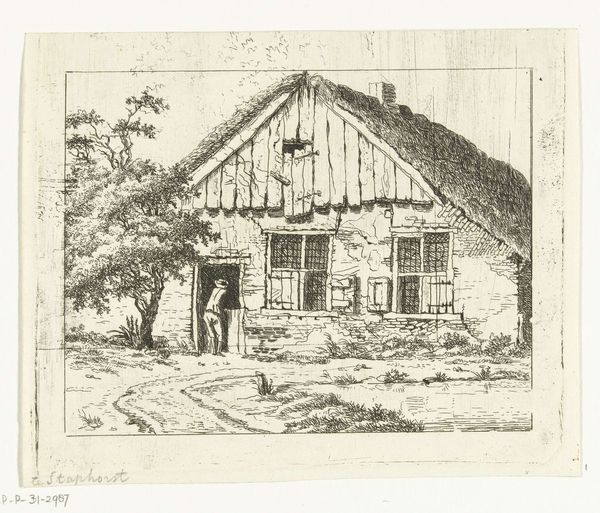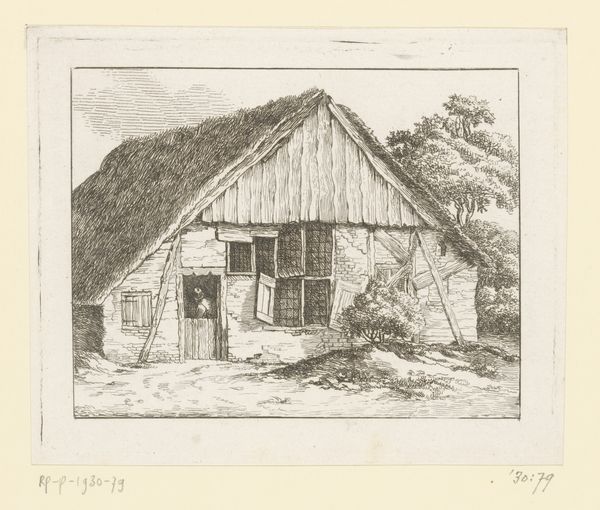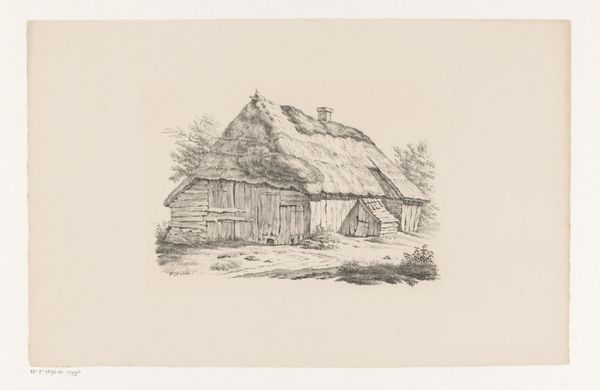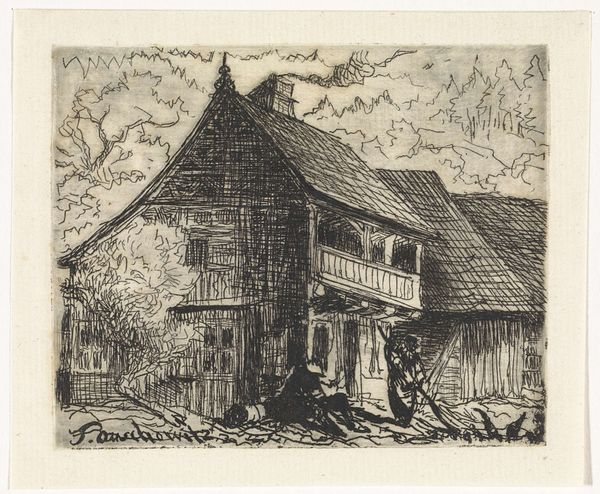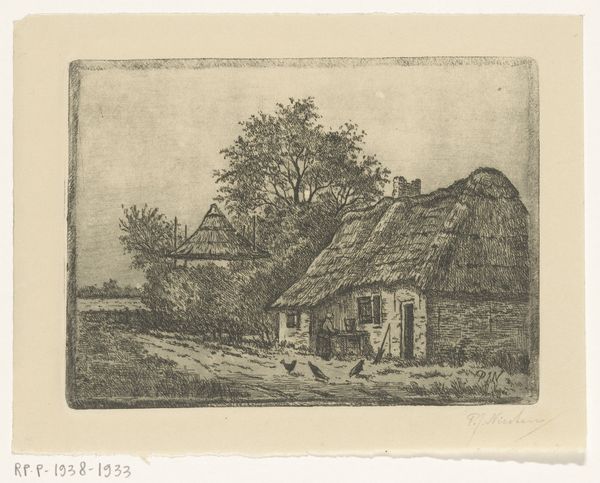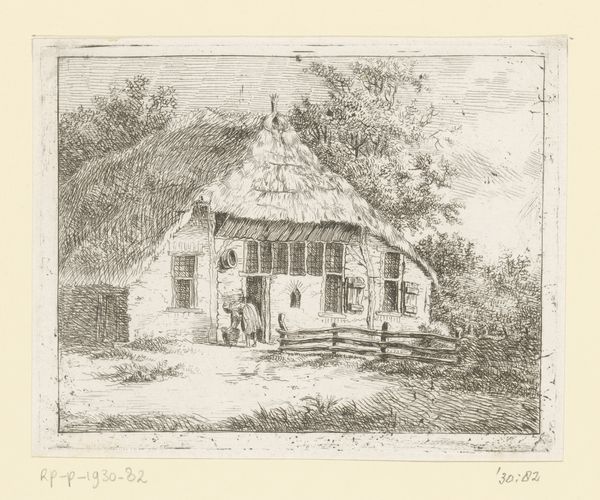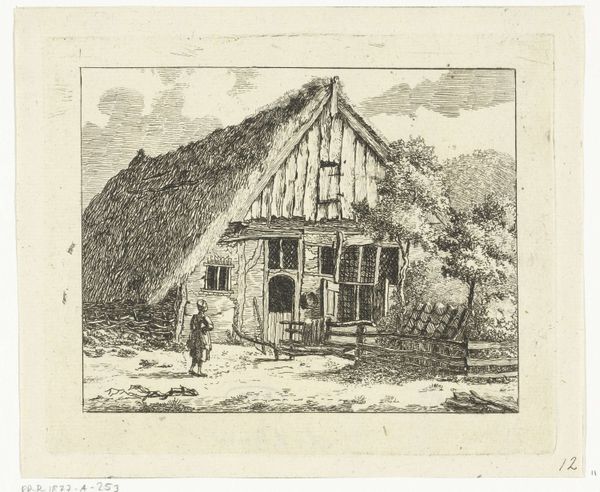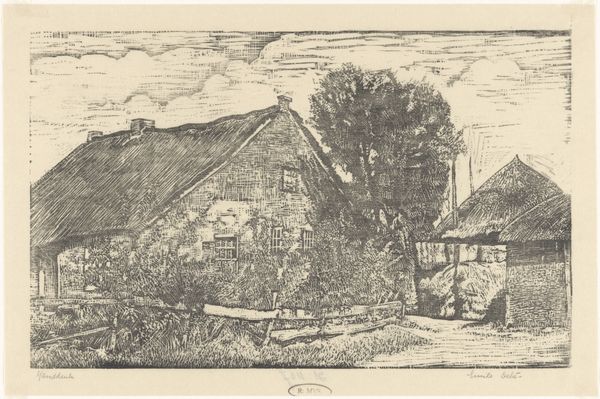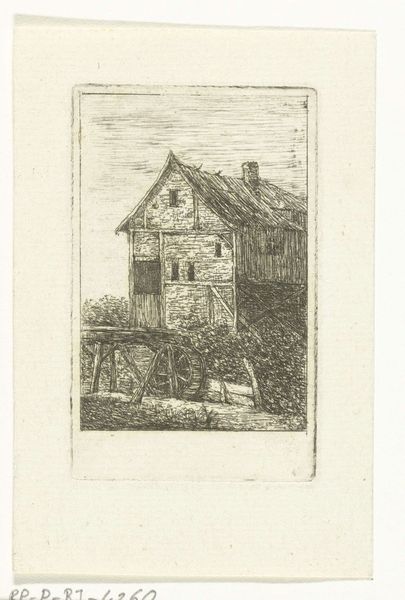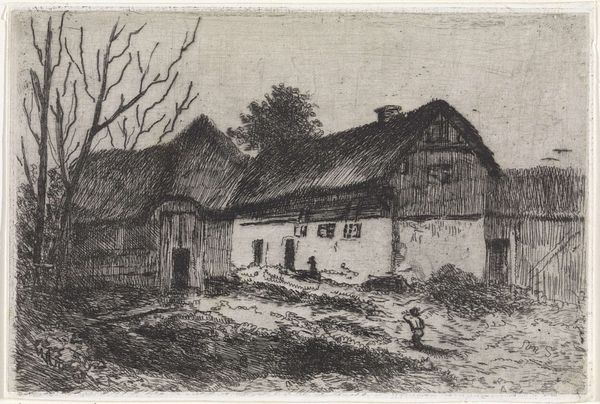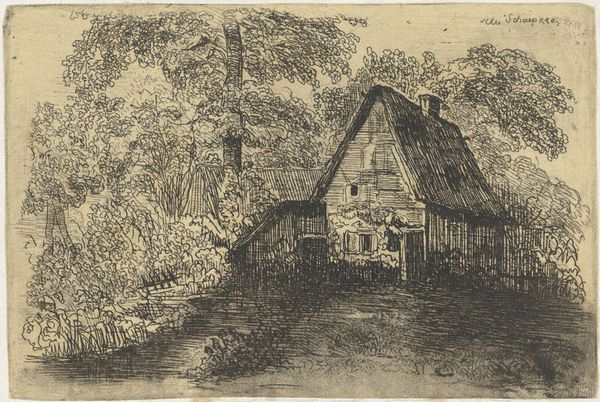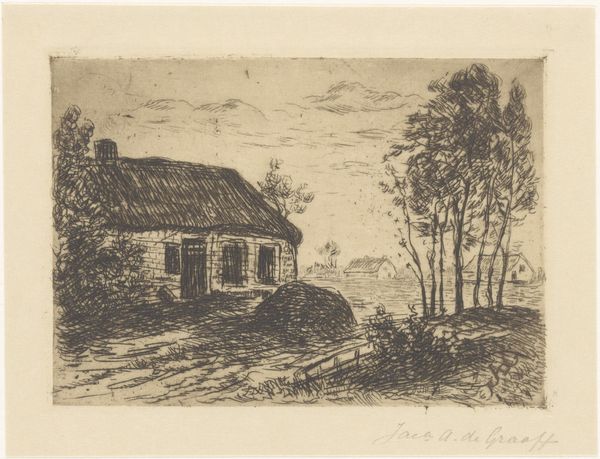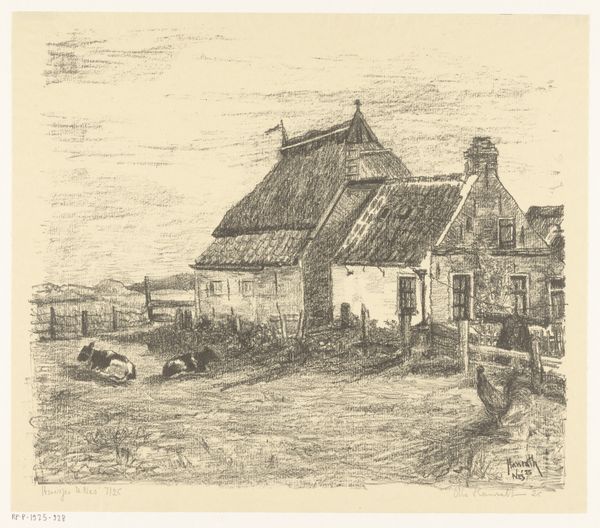
Vrouw kijkend uit de deur van een boerderij bij Staphorst 1773 - 1838
0:00
0:00
drawing, print, etching
#
drawing
#
dutch-golden-age
# print
#
etching
#
landscape
#
genre-painting
Dimensions: height 130 mm, width 164 mm
Copyright: Rijks Museum: Open Domain
Curator: Anthonie van den Bos created this etching, "Vrouw kijkend uit de deur van een boerderij bij Staphorst," sometime between 1773 and 1838. Editor: It's remarkable how detailed the texture of the thatched roof is, given it's an etching. It feels almost like I could reach out and touch the coarse straw. The level of precision is truly compelling. Curator: It speaks to a Dutch Golden Age sensibility, doesn't it? A quiet observation of everyday life rendered with incredible care. The woman in the doorway, though small, grounds the entire scene. I see echoes of domesticity and the social positioning of women at the time. Her gaze—inquisitive, yet contained within the domestic space. Editor: Exactly. And look at the structure of the farmhouse itself! The materials—the timber framing, the brickwork. You can almost feel the weight of generations who have labored on this land, building and maintaining this space with their own hands. It makes me think about the historical building trades, how important the sourcing and the act of thatching itself was, which tells its own story of the relationship with local labor. Curator: That resonates strongly. Staphorst was known for its unique cultural traditions, resistant to outside influences. The house becomes not just a dwelling, but a symbol of that cultural preservation, reflecting communal values and resilience in the face of societal changes. Editor: And considering the printmaking process—the act of etching itself involved intense labor. Each line, each shadow, carefully considered and physically etched into the plate, only to be pressed repeatedly to spread the image...The consumption aspect becomes so layered! Curator: It becomes a question of access, doesn't it? How did representations like these circulate, and what impact did they have on wider understandings of rural communities and identities? It invites a discussion about cultural anthropology and art. Editor: Absolutely. Seeing this interplay, that continuous thread between making, depicting, and receiving—it completely reshapes how I think about art and the world it mirrors. Curator: Indeed, reflecting on these intersecting histories helps reveal narratives not always immediately visible, which prompts critical conversations and fosters a richer understanding of identity in art. Editor: Seeing art through a process and materials lens changes my viewing experience and reminds me to see art as a form of labor.
Comments
No comments
Be the first to comment and join the conversation on the ultimate creative platform.
